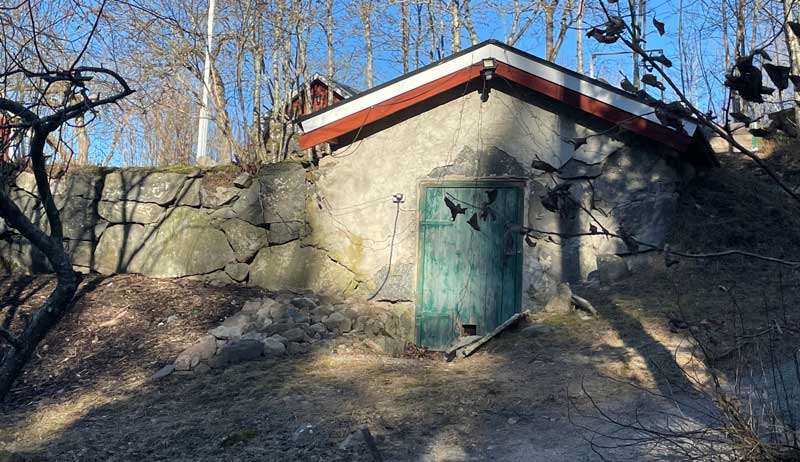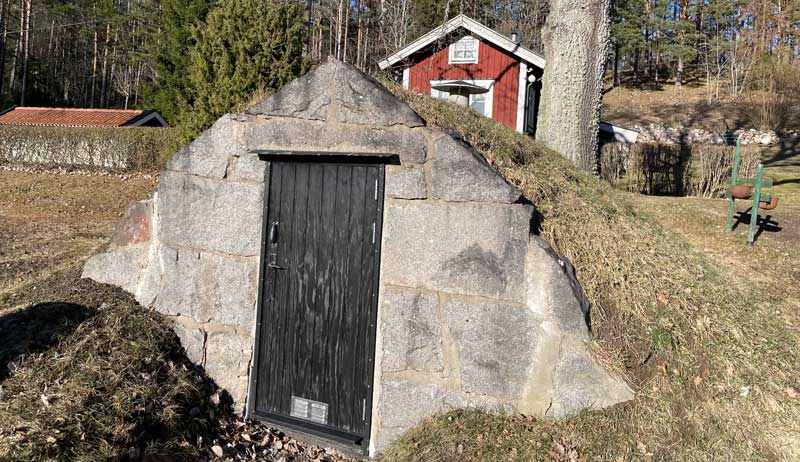There are countless root cellars in Scandinavia. The popularity of storing food on the farm and woodland homestead has been persistent in a country with both a long tradition of DIY food growing and a climate that necessitates a system for winter food storage when the gardens go dormant.
In my travels I found many cellars dating back to 50s and far earlier. The older cellars had large natural stone block walls, and the new ones were poured concrete. It was interesting to note how many were still in use even though those who built them were no longer around to fill them up with carrots, beets and potatoes.
These are the most popular crops I found in the cellars I visited. But there were also rutabaga, turnip and even some hardy flowers bulbs being held over for spring planting.

Features of Scandinavian Root Cellars
The Scandinavian cellar has a few features that stood out. You can find similar features in other cellars, such as those in North America. But I saw some particularities that gave me a sense of the builders being innovators.
The cellars were often built into a small ridgeline or hillside—often glacial morraines and eskers (which are common in northern Europe). This takes advantage of a few geographical features. First, the cellar gains protection and thermal mass from the earth on three sides. Second, it means availability of ample boulders and cobble stones to make a façade for the cellar and retention walls for the front.
However, unlike my own cellar—which is deeply buried in my glacial moraine ridge with over 4 to 6 feet of soil cover—these Scandinavian cellars were more often built toward the top of the hillside, with less soil cover and often a frame roof. This offers less protection from extreme cold, but the temperatures in southern Sweden are not as cold as my own Ontario winters.
Still, with roof trusses possibly filled with wood chips as an insulation and the roof covered over with snow, there must be enough protection. When there was no pitched roof, the rounded earthen mound would usually have an overhang of corrugated metal to keep rain and snow off the doorway.
Read more: These garden veggies are root cellar rock stars!
Air Management
That being said, the cellars often had stairways down into the cellar and made use of triple airlocks! Two horizontal-style cellar-style doors would lift up. Rhen, at the bottom of the staircase, there would be a regular vertical door into the second airlock, followed by a third vertical door into the cellar.
This would have a great thermal regulating effect in extreme weather, despite people going in and out.
These cellars all had air intakes and exhaust. The exhaust went out the top, a normal feature in a cellar. But more often than not the cold air intake was built…

